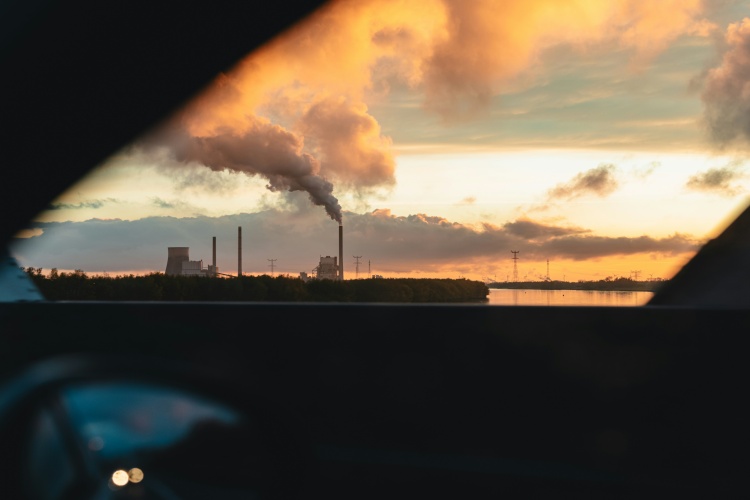
Reducing air pollution: The ministry of environment, forest, and climate change has introduced new guidelines for conducting investigations and imposing penalties on polluters, after the Supreme Court called for strict action against unchecked environmental violations. These updated rules outline crucial factors to consider when determining the scale of penalties. Adjudicating officers are now required to assess variables such as a project’s location and size, the industry type, and the specific nature of each violation.
The ministry is also considering plans to increase environmental compensation on farmers as paddy straw burning continues in states like Haryana and Punjab, despite numerous warnings. The ongoing practice of stubble burning has severely impacted air quality in neighbouring states, contributing to high pollution levels in Haryana and the National Capital Region.
READ | Trump 2.0: India’s strategic gains and economic challenges
Enforcing industrial pollution standards
For industrial pollution, the ministry has announced stricter norms for violations such as operating without environmental clearance, failing to meet mandated standards, or breaching conditions attached to granted clearances. Penalties will be based on the severity of the health impacts, financial gain derived from non-compliance, and the frequency of recurring offenses. Adjudicating officers may escalate cases to appropriate authorities to ensure cases are managed correctly.
A notable feature of the updated rules is the emphasis on timely resolution. All inquiries must be completed within six months from the issuance of notice. While this deadline aims to prevent delays and ensure that violations are promptly addressed, practical implementation often proves more challenging.
Air quality crisis in India
India faces a severe air quality crisis, with pollution reaching hazardous levels in many cities following Diwali celebrations. In the national capital, the AQI recently surpassed 500, with PM2.5 levels 65 times above the WHO’s recommended limit. According to AQICN data, air quality levels are classified as poor between 200-300, very poor from 301-400, and severe from 401-450. Levels above 450 are designated as severe-plus which pose serious health risks.
In the MC Mehta vs Union of India case, the petitioner argued that weak enforcement has exacerbated air pollution, particularly from stubble burning in Punjab and Haryana. Recently, the Supreme Court highlighted the absence of rules for appointing adjudicating officers under Section 15C of the Environment (Protection) Act, 1986, as a significant barrier to imposing penalties for environmental violations. Despite show-cause notices issued by the Commission for Air Quality Management (CAQM) to state environment and agriculture officials, the court observed minimal progress due to absenteeism among monitoring committee members. The Union government has assured the court of plans to replace inactive members.
Air pollution and public health
According to a BMJ-published modelling study, outdoor air pollution from all sources contributes to 2.18 million deaths annually in India, second only to China. Globally, air pollution from fossil fuels in industry, power generation, and transportation is responsible for an estimated 5.1 million additional deaths each year.
The Supreme Court’s declaration of the Right to Clean Air as an integral part of the Right to Life underscores the gravity of the crisis. The Court has voiced concerns over an apparent lack of resolve from both the central and state governments in tackling the issue.
A call for comprehensive action
With air pollution a top priority for policymakers, India urgently needs a year-round action plan. A meaningful start would involve nudging farmers to abandon crop-residue burning. While this practice is seasonal, efforts to deter it cannot be limited to last-minute warnings; incentives for farmers must be established and promoted throughout the year.
However, it is essential to recognise that stubble burning is only part of the problem. Delhi’s baseline pollution load, from industrial emissions, vehicular traffic, and construction dust, significantly worsens air quality. Addressing the pollution crisis will require both technological interventions and increased investments in public transportation, as well as encouraging people to adopt eco-friendly practices. To achieve real progress, the central and state governments must set aside political differences and collaborate to combat air pollution.
India’s pollution challenges are not limited to the capital. In fact, Tier II and Tier III cities are increasingly experiencing severe air quality issues. According to the 2023 pollution index, Byrnihat in Meghalaya and Begusarai in Bihar recorded air pollution levels worse than those in Delhi. Polluting industries, heavy vehicular traffic, institutional oversight, and regional topography all contribute to this growing crisis. Rural areas, often overlooked, are also home to unchecked industrial pollution, which must be addressed with stricter monitoring and enforcement measures.
India cannot afford to focus all its efforts on Delhi alone. The steps taken to reduce air pollution must extend to the hinterlands, creating a cleaner and healthier environment for all citizens.
